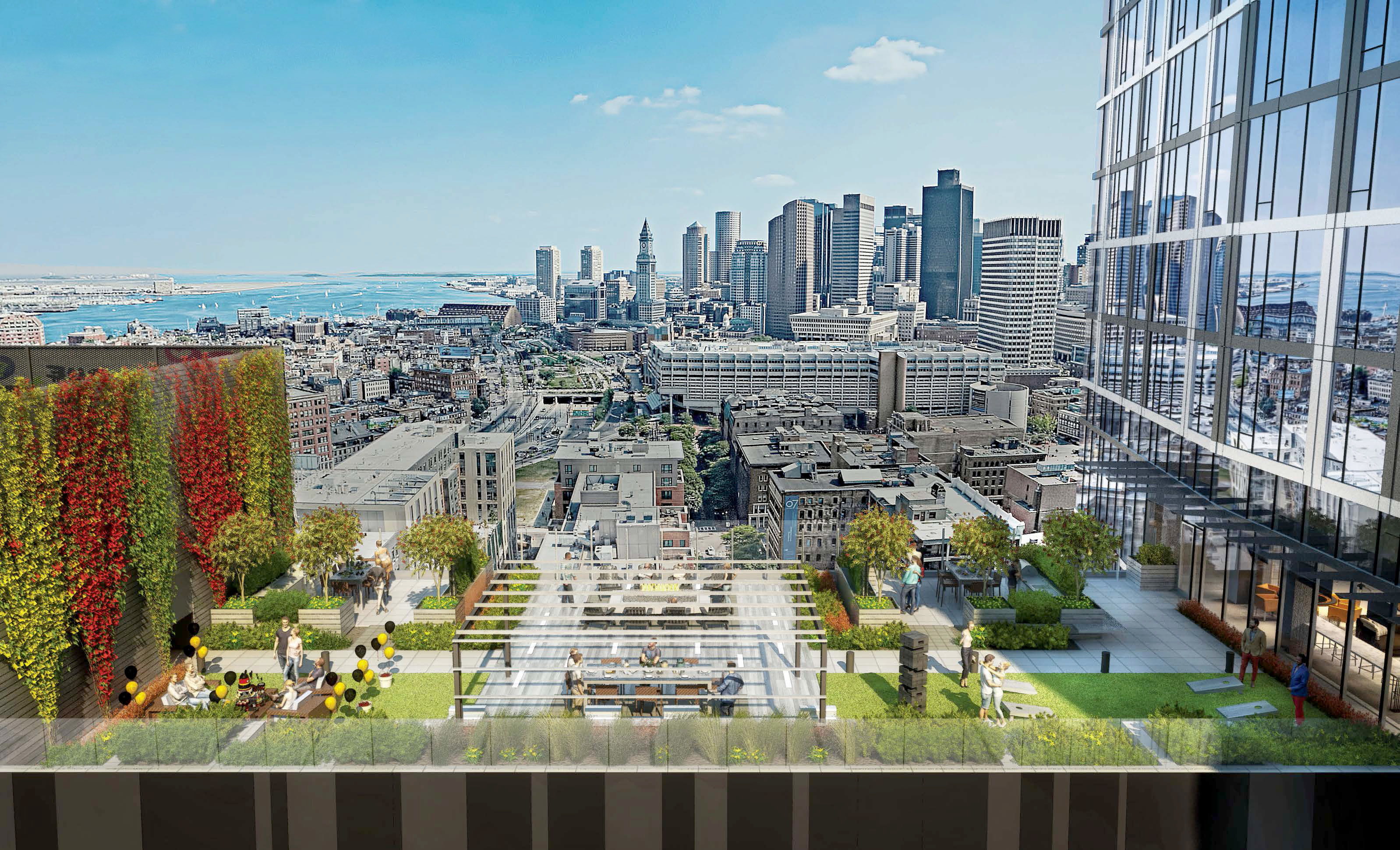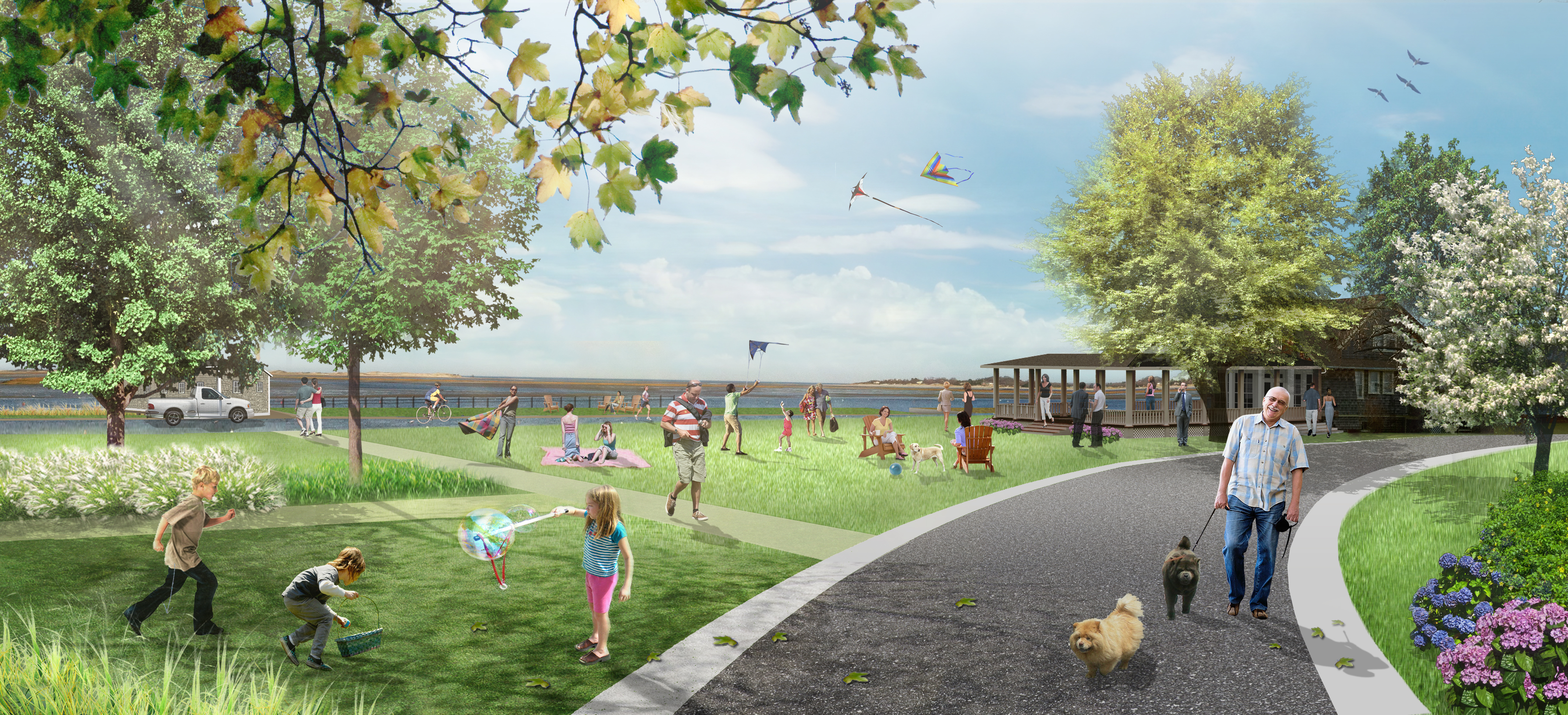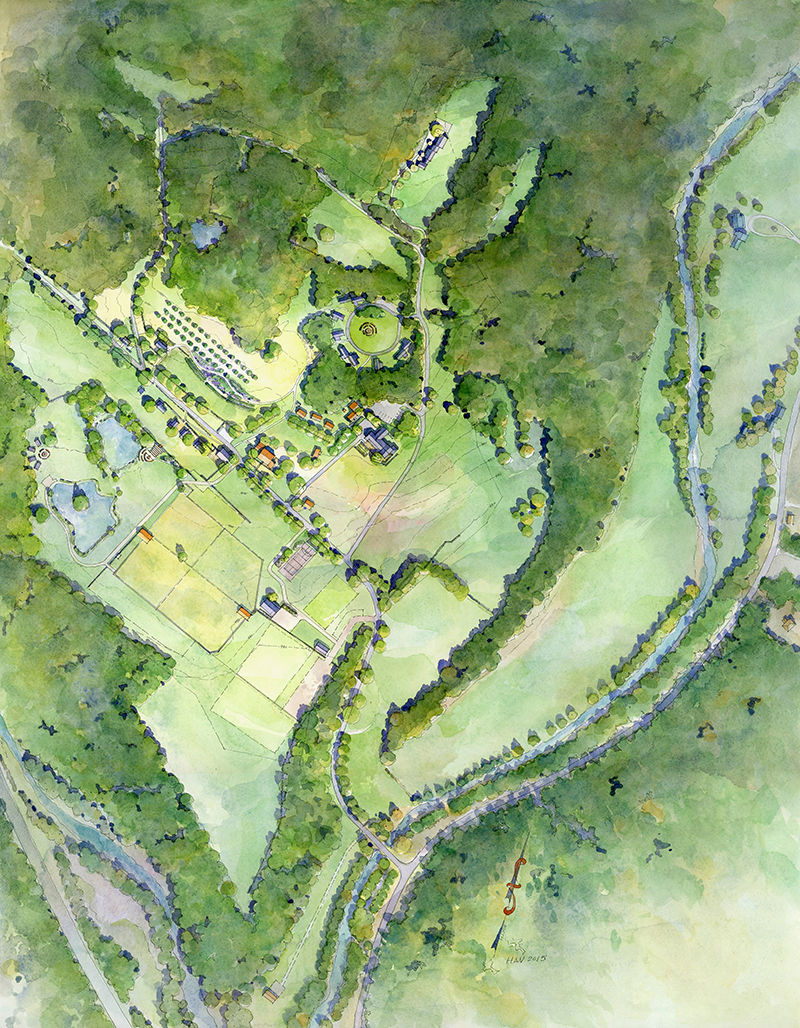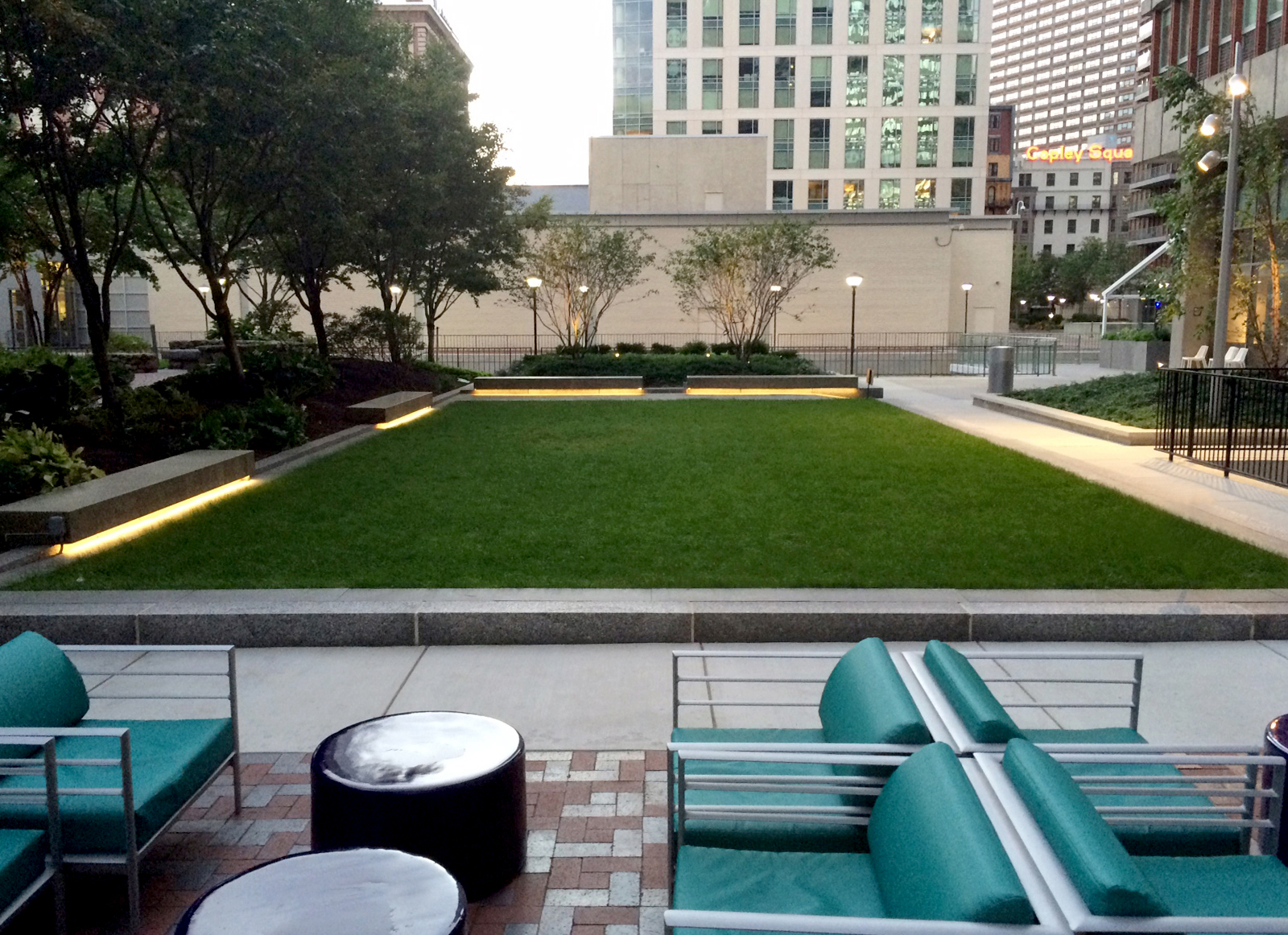James Heroux ASLA

Job title and company: Senior Landscape Architect
Degrees: Bachelor of Landscape Architecture, Bachelor of Fine Arts, Bachelor of Arts—American Literature.
Professional interests: Urban design, healthcare, and higher level academic typologies. Overall, interesting clients and projects always interest me, regardless of project type.
What are you working on now?
A number of projects that range in both size and type. They include the siting and relocation of a sculpture at Logan Airport; a small waterfront park in Essex, Massachusetts; site design for new science centers at two separate schools, Portsmouth Abbey School in Rhode Island and Bard College in New York; the Hub on Causeway mixed-use project in Boston’s West End; and the mixed-use Parcel K development in Boston’s Seaport neighborhood.

Image: The Hub on Causeway, Residential Building—Roof Deck (Boston). Credit: Solomon Cordwell Buenz (SCB).
How do (or how did you) you explain to your mom what you do for a living?
To keep it simple, I tell her that we design anything outside the building wall—living and inert—and that everything on Earth is in our design realm because it is the landscape.
What inspired you today?
I feel lucky to be able to say that I am able to find daily inspiration right outside my doorstep having lived in the City of Boston for more than 30 years and using my bike as my means of transportation. Every day reveals different light and shadow on buildings and spaces. This provides me with an endless source of wonder on how different our urban world looks depending on the day, time of year, and the weather.
What architectural buzzword would you kill?
I’d like to propose the phrase “Thinking outside of the box.”
When you’re working, do you discuss or exchange ideas with your colleagues?
When they will listen to me!

Image: Conomo Point, Waterfront Master Plan (Essex, MA). Credit: Li Hong.
What are you reading?
The New Yorker, New York Times, Evicted, and The Alienist.
Do you sketch by hand or digitally?
Both.
Has your career taken you anywhere you didn’t expect?
It has taught me to love all landscapes—natural and urban, from the ground and above, and everywhere in between.
Where is the field of architecture headed?
There are so many talented people in our profession, both locally and internationally. The thought process has pleasingly become more comprehensive, which has resulted in more exceptional projects that address multiple needs—environmentally, socially, and contextually.
Can design save the world?
No. Only humanity can save the world. Caring comes first, and design comes later.

Image: Ottauqhuechee Farm—Master Plan (Bridgewater Corners, VT). Credit: Li Hong.
What do you hope to contribute from your work?
I hope to create understandable, functional, and revealing designs that touch as many people as possible through simplicity and nongratuitous gestures.
Who or what deserves credit for your success?
I would give credit to an English professor who taught me that art, economics, literature, politics, and religion are related and each one marks a time in history. Not one of these can be ignored if we expect to understand the world we live in. Tom Payette also deserves credit. He taught me that we design for people first and build bridges for those who follow us. Beyond these two individuals, there are too many authors to list.
Your least favorite college class?
I never had a least favorite. I hated leaving school for the professional world.
If you could give the you-of-10-years-ago advice, what would it be?
Life changes occur beyond our control, so do not hesitate to change along with them.

Image: Avalon at the Prudential Center (Boston). Credit: Copley Wolff Design Group.
Your favorite Boston-area structure?
I enjoy too many buildings and spaces in Boston to list. I would say the structures I appreciate the most fall into the “potential-not-reached” category. There are two great buildings that I feel have not quite reached their true potential: Boston City Hall and the Christian Science Center. As with most architecture, both reflect a specific time in urban history; I feel changes could be made to animate inert edges and make the buildings more visually accessible and less static. The Boston Public Library is a great example. The addition of a café has encouraged the public to enjoy the architecture of Stanford White, and the recent renovation of the Philip Johnson addition shows how architecture can be made better by turning an introverted building into an extroverted public celebration.
Who would you like the BSA to interview next?
Do virtual interviews count? If so, Jane Jacobs, or J.B. Jackson.
If you were on a late-night TV show, what would your 30-second plug be?
This seems like the next question – sound bites reflect an unfortunate time in our current history.
If you could sum up your outlook on life in a bumper sticker, what would it say?
Don’t use bumper stickers to spread messages because they say more about you than the message itself.

